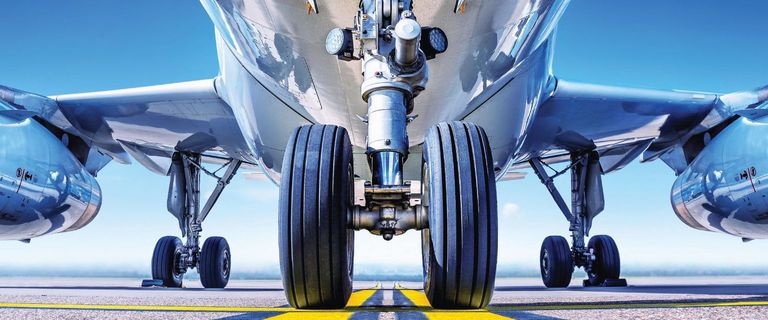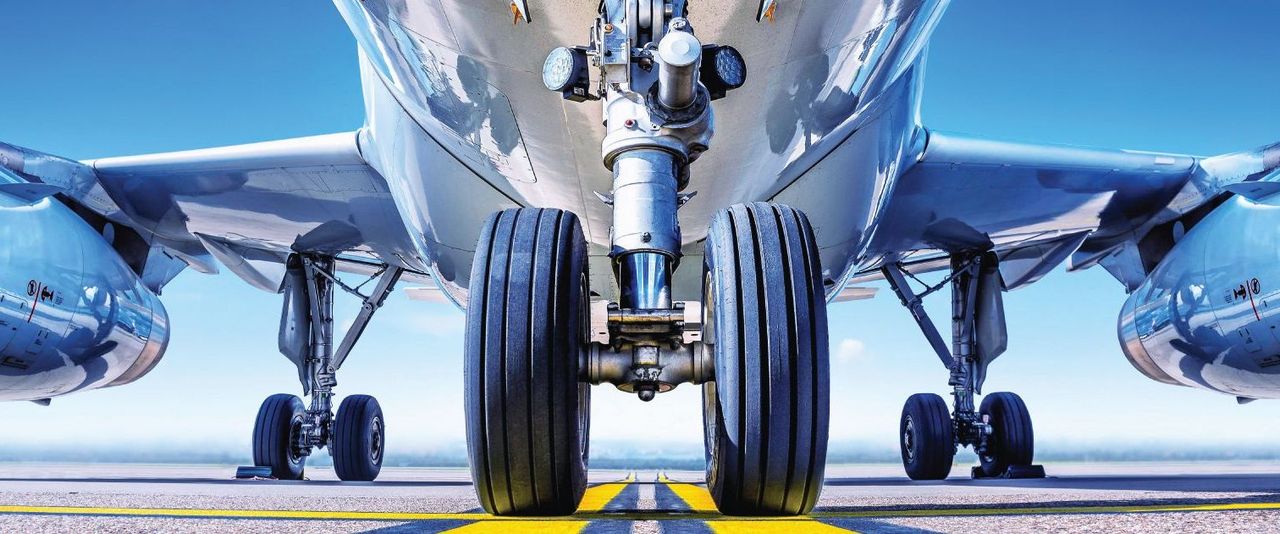Cylindrical Grinders Provide the Right Stuff for Aerospace Components
Regardless of part type, process consistency and stability are mission critical when it comes to cylindrical grinding for aerospace applications. Aerospace shops must have cylindrical grinders that deliver extremely high precision, rigidity and vibration dampening along with temperature control to ensure repeatability from one part to the next whether grinding HVOF coated landing gear cylinders, pump housings, dog bone specimens; match grinding valves and plungers; or generating curvic coupling profiles.
Aerospace part materials can vary from high-temp nickel alloys to hard coated aluminums that provide temperature stability, cold or hot and on the ground or at 30,000 feet. Such materials are often difficult to machine with conventional methods, which is why they are ground. In many instances, grinding proves more cost-effective than, say, hard turning when comparing cutting tool cost and tool life. One example of this is with high-velocity oxygen fuel (HVOF) thermal coated landing gear components.
HVOF-coated cylinders and other landing gear components are typically ground with diamond wheels that require special dressing applications. For these parts, aerospace manufacturers will pre-grind surfaces that are then coated with the HVOF or other type of coating. After this process is complete, they will again grind the parts to their final sizes and to ensure there is a consistent, even thickness of the coating.
When aerospace manufacturers can limit or completely eliminate the need to handle parts, their grinding operations become more consistent and part accuracy skyrockets. Cylindrical grinders with both I.D. and O.D. grinding capabilities allow shops to accomplish this with the flexibility to do more operations in one part setup. For instance, manufacturers not only O.D. grind aerospace components such as pump housings on these machines, but they can also generate out-of-round I.D. shapes like squares, hexagons and others – as long as the smallest diameter of the form is bigger than the radius of the I.D. grinding wheel. However, these operations require cylindrical grinders with large swing diameters.
A key aerospace application that depends on effective cylindrical grinding is the production of so-called testing dog bone specimens. These are typically square chunks cut from raw part castings and/or materials that are then used to determine/define as well as prove out a specific part process prior to its incorporation into actual part-production operations. These specimens can represent any component on an aircraft, and aerospace customers will supply them to UNITED GRINDING North America so they can help develop the cylindrical grinding process necessary to achieve the desired surface and/or thread forms as well as surface finishes and finished tolerances. This is also when machine specifications are determined, such as wheel grit size, infeed speeds and other parameters, to ensure a repeatable process. For test bones that need threaded on both ends, grinding is much more cost-effective compared to conventional threading cutters.
Match grinding such parts asvalves, plungers, spools and sleeves and other hydraulic aerospace components is another critical and challenging cylindrical grinding operation. In match grinding, a shop will grind the O.D. of one part that must then match up with and slip into the I.D. of another mating part. These parts also often need chamfers ground for proper hydraulic fluid connections.
What makes match grinding so challenging is that tolerances on the parts are typically within 1 micron (0.000039"), and the same holds true for part roundness and straightness. To achieve these stringent requirements, UNITED GRINDING North America often recommends automating the cylindrical grinding process.
Another aerospace application that tests the abilities of a cylindrical grinder is the form profiles for curvic couplings. These special tooth-like forms are ground into part surfaces when multiple parts are sandwiched together side-by-side on an axial component, such as a jet engine shaft. To generate these shapes, cylindrical grinders use cup-type wheels and must be able to grind above and below the centerline in the Z axis as well as accurately index in the C axis.
Above and below the centerline, the machine grinds one side of the curvic coupling tooth shape, then the part is indexed in the C axis for the next and so on until the pattern is complete around the part face. The grinder must produce perfect tooth forms and pitch tolerances as well as hold the current pitch over the whole part diameter.
For aerospace applications, UNITED GRINDING North America’s wide range of STUDER cylindrical grinders, including the popular S41, S31, S33 and favorit models, delivers the processing flexibility along with the precision, rigidity and temperature control mandatory for stable, consistent and repeatable part-production operations. Their ability to consistently grind to within or less than a micron results from not only their I.D. and O.D. capabilities for single-setup part processing and their overall higher precision components, but also from the high rigidity of their smart, modern Granitan® bases.
These machine bases control temperature and vibration and can feature additional internal coolant flow through the beds themselves if necessary. This means that sudden expected fluctuations in a factory floor’s ambient temperatures are now less of an issue because of the machine’s self-contained temperature control capabilities.









